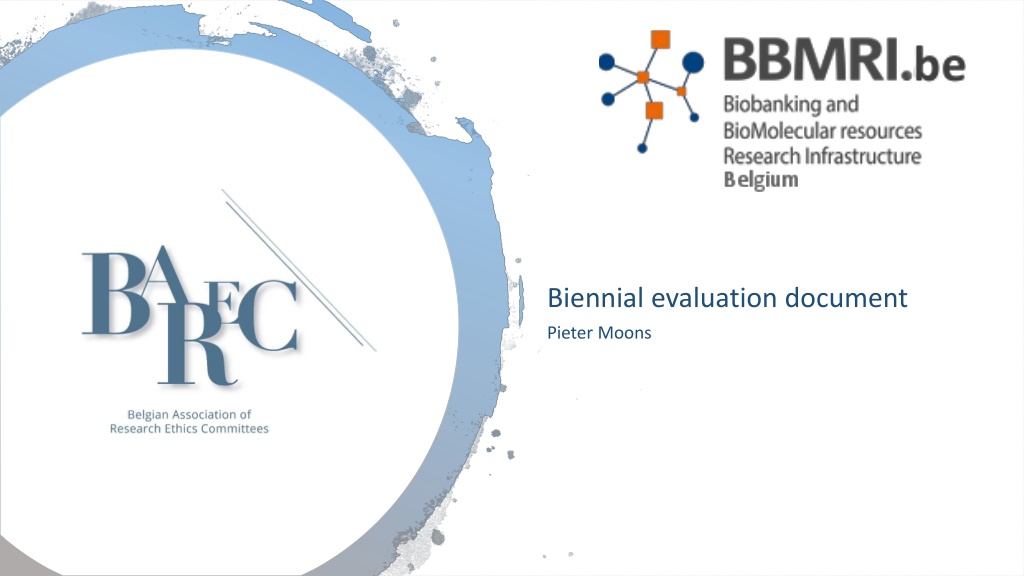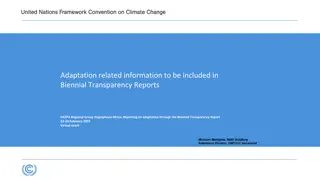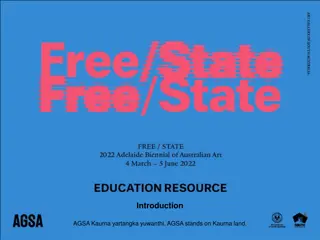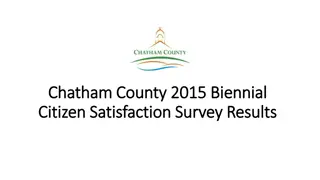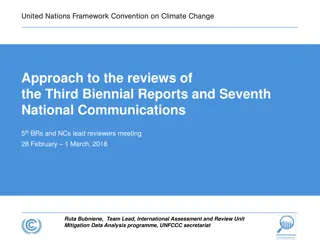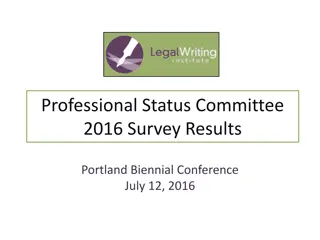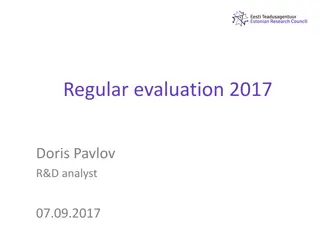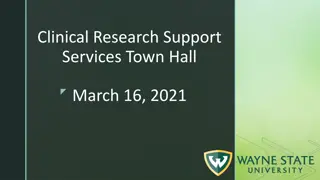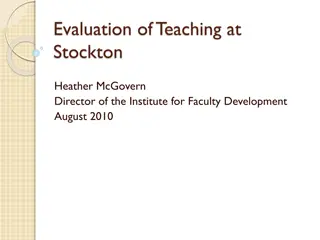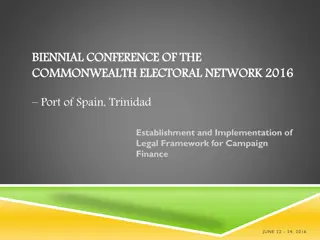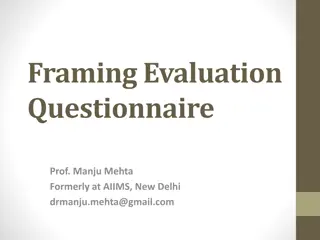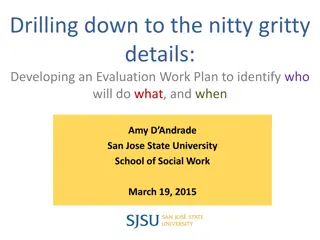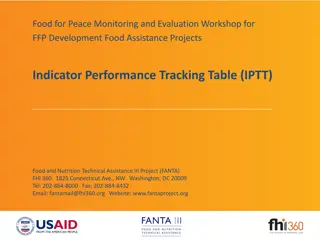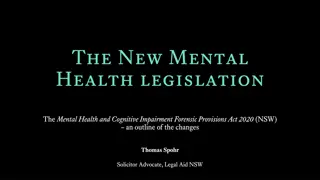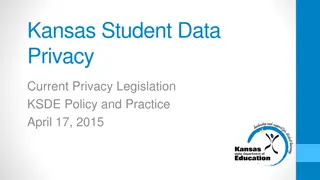Biennial Evaluation Document and Biobanking Legislation Overview
Explore the biennial evaluation document by Pieter Moons and the biobanking legislation working group's aim to provide guidance to ethical committees and biobank managers. Learn about the BAREC working group's efforts regarding biobanking and GDPR, along with the feedback received from various stakeholders. Delve into the content of the template and the importance of the registry, including art. 11 provisions. Consider the role of electronic formats and data management in biobank evaluations.
Download Presentation

Please find below an Image/Link to download the presentation.
The content on the website is provided AS IS for your information and personal use only. It may not be sold, licensed, or shared on other websites without obtaining consent from the author. Download presentation by click this link. If you encounter any issues during the download, it is possible that the publisher has removed the file from their server.
E N D
Presentation Transcript
Biennial evaluation document Pieter Moons
Biennial evaluation of the biobanks Legislation Aim of the working group was to provide a template document to: Provide a guidance document to the ethical committees Provide a guidance document to biobank managers Harmonise the evaluation procedures among ethical committees NOT strictly binding can deviate from the template => better way of presenting your specific case
BAREC working group biobanking and GDPR The proces Aernout Deraemaeker, UZLeuven Angelique Rezer, UZLeuven Ann Bracke, AZGroeninge Anne Gabriel, UCLouvain Audrey VanScharen, UZBrussel Charlotte Vanhoorne, UCLouvain Christel Vansteenkiste UZBrussel Hilde Debois, GZA Kimberly Vanhees, Jessazh Marianne Paesmans, Bordet Peter Vermeulen, GZA Pieter Moons, UZA Robert Rubens, UZGent Ruth Storme, UZLeuven Steven Van Wortswinkel, GZA Several rounds within the working group Feedback received from BBMRI.be members (Association of Belgian biobanks) Feedback received from the ethical committees Feedback received from industry (JnJ) Feedback received from Nick Van Gelder (FAMPH) Main criticisms Need for a Quality Management System (SOPs) Some requested documents believed to be beyond legal requirements
Content of the template The registry
The Registry Art. 11. Ingeval bij een handeling verricht met traceerbaar menselijk lichaamsmateriaal zoals bedoeld in de artikelen 14 en 22, 5, of bij het gebruik van traceerbaar menselijk lichaamsmateriaal zoals bedoeld in de artikelen 14 en 22, 5, analyses betekenisvolle informatie opleveren over de gezondheidstoestand van de donor, heeft deze recht op deze informatie. Art. 11. Au cas o , lors d une op ration effectu e avec du mat riel corporel humain tra able tel que vis aux articles 14 et 22, 5, ou lors de l usage de mat riel corporel humain tra able tel que vis aux articles 14 et 22, 5, des analyses g n rent des informations ayant des cons quences significatives sur l tat de sant du donneur, celui-ci a droit ces informations.
The Registry Electronic format Of limited value in the evaluation process? List of samples (can be massive for some biobanks) Amount of records in line with expectations? Number of incidental findings in line with expectations (executed at all?)?
Content of the template What is the purpose and what are the aims of the biobank? & Does the biobank have the operational capacity to perform the listed activities?
Purpose of the biobank Description of HBM in theBiobank Please provide a general description of the (future)material in your biobank: Examples of material include Material in the biobank Body fluids (blood, urine, feces, vaginal wash, ) Tissues (FFPE, Fresh frozen, ) Derived material(DNA, RNA, proteins, ) Cell lines Aims and objectives of theBiobank Please provide a general, but specific, description of the aims and objectives of your biobank: Please indicate which research domains and types of research will be supported by your biobank: Type of research Examples of research domains include: Ageing, cardiology, immunology, infectious diseases, gynaecology, oncology supported Examples of types of research include: Genomics, metabolomics, biomarkerstudies, development of diagnostic test or procedure,
Activities of the biobank StoringHBM For indefinite period of time (long term biobank) For limited period of time (temporary biobank): Timeframe: . For own institution only Acting as the biobank for another institution/organization/company : Storage Importand/or collection of HBM Territorial From Belgium From other country in EEA From outside EEA Source Receipt and processing Industry (biobank / lab) Academia (university (hospital) / biobank / lab) Other: Donor From living donor Prospectively collected HBM: Research HBM obtained in the setting of a research project/study approved by the Medical Ethical Committee (MEC)( Primary use ) Residual HBM (art.2, 33 Belgian Law d.d. 19 December 2008 regarding the procurement and use of human biological material intended for human medical applications or for scientific research purposes ( HBM law ): HBM primarily obtained for diagnostic purposes or for therapeutic interventions but not (longer) needed for additional diagnosis and as such may be discarded left-over HBM: remaining after the scope / objectives of the primary use for a research project/study have been accomplished From deceased donor Collection of material after decease for scientific research purposes (art. 12HBM law) Making HBM available To whom To industry (commercial biobank / lab) To academia (university (hospital) / biobank / lab / investigators) To own institution only To where (export) HBM remains in Belgium HBM goes to another country in EEA HBM goes outside EEA Provision
Traceability Traceability The biobank contains Traceable HBM (pseudonymised) Non-traceable HBM (anonymised) Sample management system Allows for the registration of samples and corresponding data Ensures the traceability of the samples and derivatives thereof (if applicable) Art. 8. Indien met toepassing van artikel 22, 4, van de wet geopteerd traceerbaarheid, wordt donoridentificatiesysteem toegepast, waarbij elke donatie en elk ervan afgeleid menselijk lichaamsmateriaal wordt voorzien van een unieke code. wordt voor een eenduidig Allows to generate the minimal data required for the biennial evaluation by the EC / for the competent authorities (upon request) Allows to shield personal data from users, except for the professional manager Art. 8. Si, en application de l article 22, 4, de la loi, il est opt pour la tra abilit , un syst me univoque d identification du donneur est mis en uvre, attribuant un code unique chaque don et chaque mat riel corporel humain qui en provient. Allows the professional manager to inform the patient or treating physician in case of incidental findings; if not applicable, please motivate:
Assesment of operational capacity Biobank quality management systems Although quality management systems (QMS) are not a legal requirement, having a quality management system in place inspires confidence to the EC that the biobank operates according to certain standards. Please indicate whether you adhere to (this is no legal requirement and has no impact on the evaluation!): ISO 9001 date of last accreditation dd/mm/yyyy ISO 20387 date of last accreditation dd/mm/yyyy Other . date of last accreditation dd/mm/yyyy Internal QMS None
Assesment of operational capacity SOPs describing sample collection and import for storage in biobank, including guarantees related to ethical approval, consent status and privacy laws. SOPs describing how HBM is made available to (i) another biobank or (ii) a third party end user. SOPs documenting the data fields recorded in the data management system. SOPs describing the donor identification system (only when the biobank handles traceable materials). SOPs documenting the rules related to traceability, patient withdrawal and incidental findings. SOPs detailing how non-conformities are handled An overview of the financial compensations requested by the biobank (no profit on the material as such can be made) when deliveries are made to third party end-users or other biobanks. SOP detailing the termination procedure of the biobank
Additional documents Update of the floor plan of the premises of the biobank Copy of the previous EC approval The initial EC submission form and last biennial evaluation forms (if any), exclusive of the registry Declaration on honor by the DPO or person responsible for the data processing that the biobank operates according, and ensures compliance with, the applicable privacy laws. CV of the professional manager if changed since last submission Comprehensive list of major non-conformities received in the framework of ISO20387 audits or during inspections from the FAMPH since the initial submission or last evaluation by the EC
